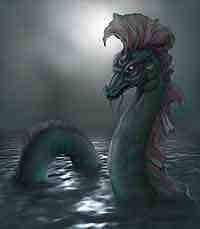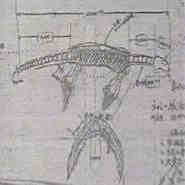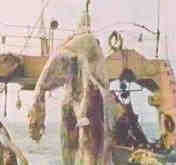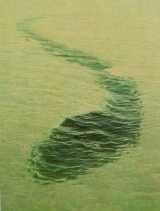

 |
One of the first known sightings occurred in 1845, when fishermen John Bockner and James Wilson saw a 100-foot-long "serpent" in St. Margaret's Bay. They reported their sighting to the Reverend John Ambrose, who not long afterwards had his own run-in with the monster.
In 1855 residents of Green Harbour were terrified to see, in one citizen's words, "a hideous length of undulating terror" pursue local fishing boats, apparently intent on bodily harm. As the fishermen raced desperately for shore, their families watched helplessly. One observer described the creature in an issue of the nineteenth-century American magazine Ballou's: "Near what might be the head rose a hump or crest crowned with a waving mass of long, pendulous hair like a mane, while behind, for forty or fifty feet, slowly moved, or rolled, the spirals of his immense snake-like body. The movement was in vertical curves, the contortions of the back alternately rising and falling from the head to the tail, leaving behind a wake, like that of a screw-steamer, upon the glassy surface of the ocean."
As the creature got closer to shore, observers could hear a sound like escaping steam emanating from the beast. They could now see glistening teeth, protruding ridges over evil-looking eyes, dark-blue scales on the head and back, and dirty-yellow on the bottom. The head they saw was six feet long.
The creature finally gave up the chase and the exhausted fishermen arrived safely on land. But it was seen again by three mean in a boat the next day. They rowed as fast as they could and were not pursued.
Then, in 1883, six military men fishing in Mahone Bay were startled to see what looked like an immense version of a "common snake" with a head six-feet long sticking out of the water. The rapidly moving creature had a neck as thick as a tree and was dark brown or black with irregular white streaks. Although they couldn't see all of its body, the witnesses agreed it must have been something like eighty feet long.
In 1894 a man named Barry observed a similar beast as he was relaxing on a wharf in the coastal town of Arisaig. About 120 feet away and approximately 60 feet long, the creature was moving with an undulating motion. A tail "like half of a mackerel's tail" was visible as well.
Reports of these giant "lunkers," as the Nova Scotians call them, have continued well into our own time.
On July 5, 1976, Eisner Penney of Nova Scotia's Cape Sable Island saw an enormous something and told some friends about it. They scoffed at him but a few days later one of them, Keith Ross, along with his son Rodney, had an encounter of their own. "It had eyes as big around as saucers and bright red-looking," he said. "I mean, you could see the red in its eyes like they were bloodshot. It had its mouth wide open and there were two big tusks - I call them tusks - that hung down from its upper jaw. It passed astern of us, so close. And we could see its body, about forty or fifty feet long with grayish, snake-like looking skin, full of lumps or bumps and barnacles. And it appeared to us to have a fish's tail, an up-and-down tail, not flat like a whale's."
Ross's boat roared away and soon lost the creature in a fog. He detected another boat on shipboard radar and made his way toward it. Ironically, Eisner Penney was on that boat. As Ross told him what he'd just seen, they heard the creature passing not far away. The creature was seen again a few days later by fisherman Edgar Nickerson.
No one has any idea what these creatures are, although similar beasts have been
reported around the world. In the 1800's they were called "sea serpents" and were the
object of spirited controversy among zoologists. Whatever the Nova Scotia lunker may
be, it seems safe to say they are not serpents, even oversized ones: Snakes cannot
undulate vertically. Nor, of course, do they have fish-like tails.
Seagoing Plesiosaur
In April of 1977, the nets of the Japanese fishing vessel Zuiyo Maru reeled in a strange haul off the coast of New Zealand - a forty foot long, unknown marine animal that looked for all the world like a primordial monster of the deep. The crew hoisted the carcass out of the water and took color pictures of the bizarre catch before the captain, fearing a contaminated cargo, ordered it dropped overboard.
Professor Tokio Shikama, a student of ancient animals at Yokohama National University, studied the photos and declared that the corpse was neither that of a known mammal nor of a fish. In fact, he compared its body to that of an ocean dwelling plesiosaurus, thought to be extinct for more than 100 million years.
Several other vessels in the area searched for the creature's remains after it was
dumped by the Japanese, but without success. The tragedy is that even a single specimen
of plesiosaur would have been worth far more than the captain's catch of normal fish.



